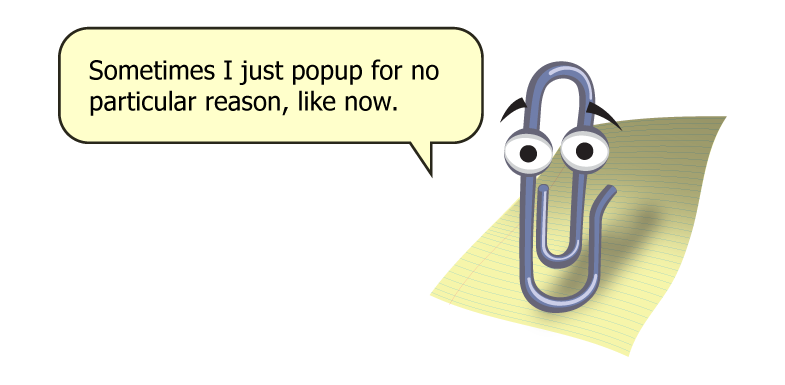It was a pleasure to attend another fantastic Gartner conference in Las Vegas (November 26-29, 2018). And while Amazon had their own mega conference (re:Invent 2018) down the road at the Venetian, the smart set were taking a broader look at the future with the team from Gartner.
So, what we’d like to do is break down the key messaging that we got from the conference, based on the tracks that we followed.
So here we go: Gartner’s key messaging from November 2018.
“IT organizations need to stop thinking in terms of projects, and start thinking in terms of products.”
– Gartner
This was the keynote theme for 2018. Last years theme was that IT needed to discover the word “yes” in their vocabulary. This year Gartner focused their messaging on redefining how IT needs to partner with the business community. Primarily, the advice was that IT needed to stop seeing the world in terms of projects, and instead embrace the concept of products as a means of implementing solutions. And, of course, it wouldn’t be a technology conference without the introduction of new a catchy phrase: PRODUCTology.
The concept is pretty straight forward and seeks to explain a lot of bad history when it comes to how IT has attempted to implement the dreams of the business community over many decades. And can be summed up as: projects are bad, products are good.
And the explanation makes a lot of sense. Projects are, by their nature, things of a finite duration. Risk needs to be managed. Scope needs to be controlled. Expectations need to be set. And then, when the project is complete, everyone moves on to the next project. Leaving in their wake a sterile, half-baked solution, that in a matter of months begins to age and crumble. The technology equivalent of a potted plant that never gets watered.
Meanwhile products are forever (well, at least until their replacement comes along). By their nature they are born of innovation and designed to be an entity that continues to grow and morph over the years as demands change and new ideas come to mind. Products have owners that care about them and lovingly tend to their good health, while also making sure they are meeting the requirements of the people using them. Products have roadmaps, they have interested parties, and they have a purpose.
In the consumer space, products are what make the world go round. While in the IT world it’s projects. And that is what needs to change according to Gartner (and we agree). If the business world wants to see their Enterprise systems become more consumer-like, then PRODUCTology is where it all starts.
“IT needs to come to the business community with ideas, as a trusted partner, and not be seen as an order taker.”
– Gartner
Gartner also spent a good deal of time urging the IT community to be more proactive with how they engage with the business community. Instead of waiting to be told what they needed to deliver, IT should be coming to the business community with innovative ideas on how to meet the demands of the era of disruption that we are now entering. Once the business community sees the IT group as an engaged and enthusiastic partner, then the nature of the relationship will completely change. And in ways that will benefit the entire organization. Gartner’s observation was that when IT and the business community collaborate well together, good things happen.
“IT can shape demand and become a thought leader.”
– Gartner
For IT to become a thought leader, Gartner recommended the use of external sources for inspiration. From Google, to Github, to Gartner themselves. There’s a plethora of information that IT can make use of, plus lots of vendors only too willing to demonstrate what they can bring to the table (which includes IntraSee by the way). IT should be looking to bring these resources and vendors to the attention of the business community as a means of creating a dialog about the art of the possible.
“If IT focuses on successful delivery, without trying to create everything themselves, then the business community will fund their initiatives.”
– Gartner
Gartner also believes that IT needs to stop trying to recreate wheels that have already been built. It’s not the job of IT to build anything. But it is the job of IT to ensure that “things” (ideally products) are built, and implemented, correctly. And that may mean a collaboration with a vendor that has a solution, but which needs configuration and extension that IT needs to be involved in. But that does not necessarily mean that IT needs to be building the code (which now has to be maintained). Once IT gets out of the code maintenance world, and into the innovation and enablement world, great things will happen for the organizations they support. What’s important isn’t how things get done, it’s what gets done that counts.
“Don’t try and build chatbots yourself. Building bad chatbots is easy. Building great chatbots is very hard. Find a vendor that understands your domain and can demonstrate excellence.”
– Gartner
And if there’s one thing that Gartner strongly recommended IT should not be trying to build, it’s chatbots. Instead, IT should be evaluating chatbot vendors and by a process of evaluation and demonstration figure out which ones truly match the hype, have the domain knowledge, and work securely with your existing Enterprise systems. Trying to build a “brain” from scratch may lead to a “Frankenbot” that consumes your organizations resources for many years.
The more research that IT does in this area, the less the chance that expensive, embarrassing, and time-consuming mistakes will be made.
“Don’t create ‘Technical debt’”
– Gartner
This isn’t a new concept. “Technical debt” refers to any code added now that will take more work to fix at a later time—typically with the purpose of achieving rapid gains. Shortcuts, hacks, and poor design choices will all lead to huge costs later on. Costs that aren’t just financial, but also reputational too. IT often creates technical debt for itself because of a desire to build things it doesn’t need to build. Then gets sucked into a maintenance and rewrite cycle that stymies its ability to take on new requirements from the business community.
Gartner very strongly believes that taking on unnecessary technical debt causes IT many issues that it needs to avoid.
“95% of bots in the market are s***”
– Gartner quoting Chatbot Summit 2018

Figure 1: Don’t implement your own chatbot version of “Clippy”
At IntraSee we would concur with this statement by Gartner 100%. The chatbot market right now is flooded with vendors who have massively subpar solutions. Many of them don’t have any experience in the Enterprise space, and have no domain expertise at all. Even an industry stalwart like IBM, with its Watson product, has failed to take a good idea and turn it into a viable Enterprise chatbot.
At IntraSee we firmly believe that a chatbot that is built by automated means, that can plug into your existing Enterprise systems, and comes delivered from day one with domain expertise, is the only way to deliver a chatbot solution.
And, we would say that this is something you need to see to believe. So, while you are looking at other chatbots in the market (which we encourage you to do), we would strongly advise you look at what we do too. You’ll see the difference immediately.
So please contact us to arrange an online demonstration of an Enterprise chatbot in action. And welcome to the world of PRODUCTology!


